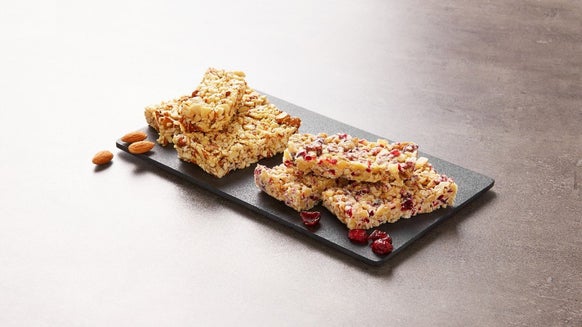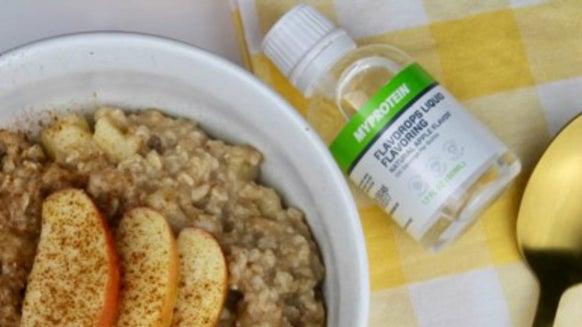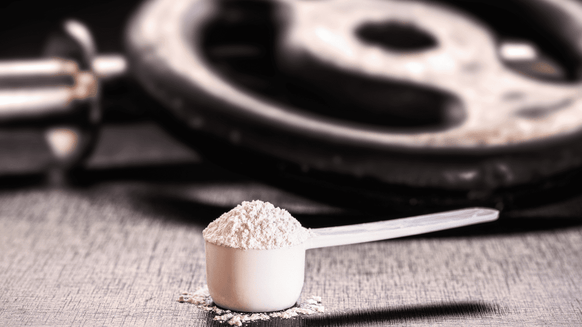
When you want to lose weight or target fat loss, a calorie deficit is key. If you think about your body as a machine, it requires energy and burns energy - a calorie deficit happens when you burn more than you take in.
Estimating the calories you are consuming in your food and beverages and factoring in what you burn through activity are the two key elements to calculate your goal calorie deficit.
What are Calories?
Calories are simply a measure of heat, or energy. Technically, 1 calorie is the amount of heat it takes to raise the temperature of one gram of water by one degree Celsius. To our bodies, calories are the way we exchange energy. Food contains the energy that we put in our bodies, and exercise is the way that we expend or burn energy. When our body stores energy, it is typically in the form of body fat.
What is a Calorie Deficit?
A calorie deficit is when you are consuming fewer calories than you are burning over time. For example, if you burn 2000 calories a day but only consume 1500, you’ll be in a 500 calorie deficit. Another example of a calorie deficit is consuming 2000 calories for a day but burning 2500.
Based on your diet and exercise, you can achieve a deficit in two ways - eating less or exercising more - or more often, a combination of both.
Find out the calorie content of daily foods with our calories chart below.
How is a Calorie Deficit important for weight loss?
Calorie deficits are the single most important factor for weight loss. No matter what the latest diet trend is, the common factor among successful weight loss plans is a calorie deficit. Whether you cut carbs, fat or fast intermittently - they usually all result in a calorie deficit to see weight loss.
1 kilo of body fat contains about 7,700 calories, and losing weight at about 0.5-1 kilo per week has been shown to be safe and sustainable.
How to Calculate a Calorie Deficit | 3 Steps
1. Calculate your daily maintenance calorie intake
To calculate your daily maintenance calorie intake, or the calories you’d eat to stay at the same weight, grab a calculator - and your most recent weight and height in kilos and cm. We’ll start by calculating your basal metabolic rate, or BMR, using the Mifflin St. Jeor equation, one of several options - but is commonly researched and regarded as a good estimate.
This basal metabolic rate is the number of calories your body burns at rest - if you did nothing but lay in bed all day.
Next, we have to account for the level of activity in your life. Multiply the BMR you calculate above by an activity factor in this table.
If you are between two levels, choose a number in the middle.
| Physical Activity Level | Physical Activity Ratio | Description |
| Sedentary | 1.55 | Sitting most of the day with no structured exercise |
| Moderately active | 1.85 |
• Sedentary or low active job with 1 hr exercise daily • Active job (moderate movement 8+ hrs per day) but no structured exercise |
| Vigorously active | 2.2 |
• Active job (moderate movement 8+ hours per day) and 1 hr exercise per day • Sedentary or low active job but 2 hours of exercise daily |
| Extremely active | 2.4 |
• Training more than 2 hrs per day • Moderately active job (walking all day) plus at least 1 hr of exercise daily |
Multiply your BMR x Activity Factor = Maintenance Calories
2. Adjust your calorie intake for weight loss
Once you know your maintenance calories, for example let's say 2500, we can calculate the calorie intake level needed for weight loss.
These calorie deficits come from a combination of eating less and burning more. If you have a strictly healthy diet and aren’t sure where to cut calories, you might have to exercise a little bit harder.
3. Adjust for physical activity
Changing your diet is just part of the calorie deficit - you also have to factor in your exercise. When you eat, those calories go in the “plus” calories column for the day, while exercise is where you subtract your calories. For weight loss, we want your daily net calories to be about 500 calories lower than your BMR.
Calculating exactly how many calories your burn during exercise is tricky, because it is not an exact science. The best way to estimate calorie burn is with a device that measures your heart rate and adjusts for your age, weight, and activity level.
How to Create a Calorie Deficit
Here are some tips to help you get started on a successful calorie deficit plan.
Focus on Realistic Changes
If you’re already eating a super healthy diet of lean protein, lots of veggies and whole grains, it might not be the best option to reduce your calorie intake - you’ll probably have to work harder in the gym.
On the flip side, if you are already pushing yourself 2 hrs a day at the gym but don’t pay too much attention to your diet, it might be time to cut out junk food and reduce your portions to see fat loss changes.
Don’t Go Too Low
When you know there are 7,700 calories in one kilo it might be tempting to reach for a higher calorie deficit for faster weight loss. However, extremely low calorie intakes or major deficits that result in quick weight loss are often not sustainable. If your calorie consumption is too low over time, your body starts to adjust and your BMR slows down - making it harder to lose weight.
Shooting for 0.5 - 1kg weight loss per week has been shown to the most sustainable and the most likely to maintain long term.
Change it Up
If your diet is on point but your workouts aren’t getting you where you want to be, make sure you’re still challenging yourself. The same 30-minute jog on the treadmill might be something your body is adjusted to, and does efficiently while burning less calories.
Try HIIT training instead of steady state cardio, or switch to the stair stepper or spin bike instead.
Incorporate Cardio and Strength Training
Cardio gives the most effective calorie burn in a daily workout, but lifting weights is what really changes your body over time. Building mass by building muscle actually increases your BMR and burns more calories on a daily basis in the long term.
Strength training is doubly important during a calorie deficit, because it will help you maintain your muscle mass while really targeting fat loss.
You Can’t Out-Work a Poor Diet
It’s tempting to read this information and think, “My nightly bowl of ice cream is only 400 calories so an extra hour in the gym will burn that off!”. Not so fast - yes, calories are equal, but our body needs high quality protein, complex carbs, and healthy fats to be efficient and keep us healthy. It takes only minutes to consume a few hundred calories but likely hours of hard work to burn them off at the gym.
Find a good balance between eating less, whilst still allowing time for foods you love, and moving more to achieve long term success.
Take Home Message
Enjoyed this article?
READ THESE NEXT:

Claire is a Registered Dietitian through the Academy of Nutrition and Dietetics and a board-certified Health and Wellness Coach through the International Consortium for Health and Wellness Coaching. She has a Bachelor of Science in Biology and a Master’s degree in Clinical Dietetics and Nutrition from the University of Pittsburgh.
Talking and writing about food and fitness is at the heart of Claire’s ethos as she loves to use her experience to help others meet their health and wellness goals.
Claire is also a certified indoor cycling instructor and loves the mental and physical boost she gets from regular runs and yoga classes. When she’s not keeping fit herself, she’s cheering on her hometown’s sports teams in Pittsburgh, or cooking for her family in the kitchen.
Find out more about Claire’s experience here.
1. Sacks, F. M., Bray, G. A., Carey, V. J., Smith, S. R., Ryan, D. H., Anton, S. D., … & Leboff, M. S. (2009). Comparison of weight-loss diets with different compositions of fat, protein, and carbohydrates. New England Journal of Medicine, 360(9), 859-873.
2. Frankenfield, D. C. (2013). Bias and accuracy of resting metabolic rate equations in non-obese and obese adults. Clinical nutrition,32(6), 976-982.






